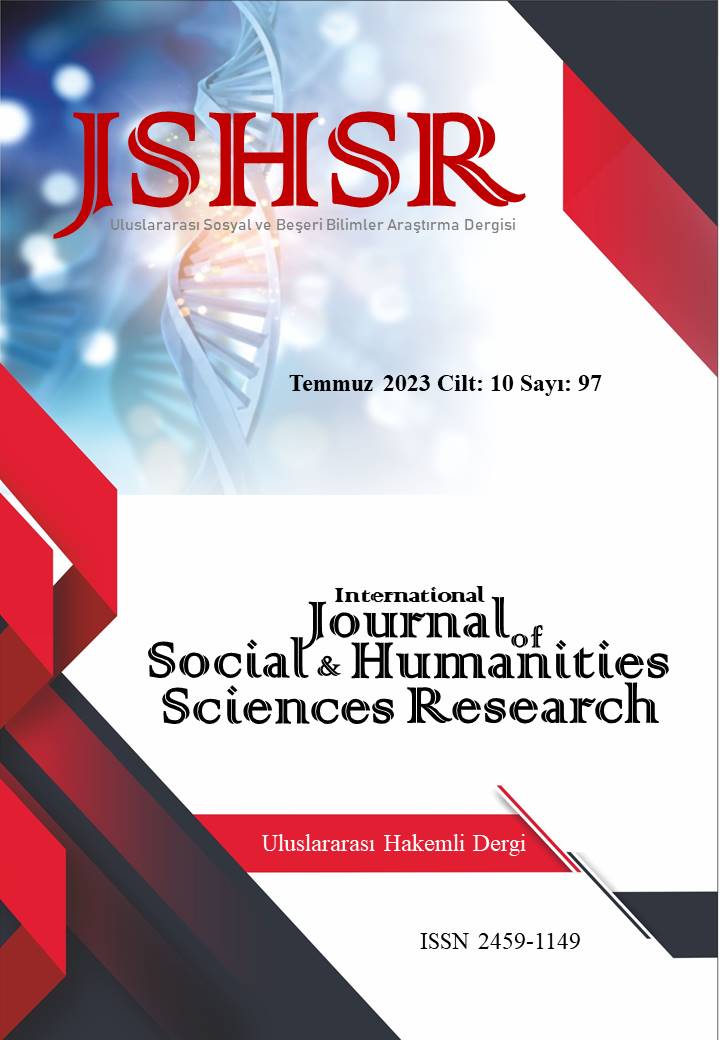Investigation of State Anxiety Levels of Primary School Teachers After 6 February Kahramanmaraş Earthquakes
DOI:
https://doi.org/10.5281/zenodo.8200759Keywords:
Earthquake, Teacher, AnxietyAbstract
The earthquake, which is a natural disaster, reveals feelings of shock, surprise, anger, helplessness, powerlessness, loss of confidence, loss of control, and fear of death in people. The aim of this study is to examine the state anxiety levels of teachers working in primary schools in Adana, which was affected differently by the disaster, three months after the earthquakes.
This descriptive study is a cross-sectional study in the general survey model. A total of 100 primary school teachers aged 25-61+ participated in the research.
Research findings; shows that female primary school teachers have higher anxiety levels than male primary school teachers, and primary school teachers aged 61 and over have higher post-earthquake anxiety levels compared to other age groups.
Initiatives to support earthquake survivors should be systematic in nature and take into account the basic care needs as well as the psychological health of people in all regions in relation to targeted actions to support people in the most affected areas.
Keywords: Earthquake, Teacher, Anxiety.
References
Aydemir, C. & Göka, E. (2002). Cognitive and emotional factors in major depression and suicide. Turkish Journal of Psychiatry, 13(1), 33-39.
Bekaroğlu, M., Uluutku, N., Tanriöver, S., & Kirpinar, I. (1991). Depression in an elderly population in Turkey. Acta Psychiatrica Scandinavica, 84(2), 174-178.
Bıçakcı, A.B. & Okumuş, F.E.E. (2023). Depremin psikolojik etkileri ve yardım çalışanları. Avrasya Dosyası, 14(1), 206-236.
Civan, A., Arı, R., Görücü, A. & Özdemir, M. (2010). Bireysel ve takım sporcularının müsabaka öncesi ve sonrası durumluk ve sürekli kaygı düzeylerinin karşılaştırılması. Uluslararası İnsan Bilimleri Dergisi, 7(1), 193-206.
Hacıoğlu, M., Aker, T., Kutlar, T. & Yaman, M. (2002). Deprem tipi travma sonrasında gelişen travma sonrası stres bozukluğu belirtileri alt tipleri. Düşünen Adam: Psikiyatri ve Nörolojik Bilimler Dergisi, 15, 4-15.
Kessler, R. C., Chiu, W. T., Demler, O. & Walters, E. E. (2005). Prevalence, severity, and comorbidity of 12-month DSM-IV disorders in the National Comorbidity Survey Replication. Archives of general psychiatry, 62(6), 617-627.
Manav, F. (2011). Kaygı kavramı. Toplum Bilimleri Dergisi, 5 (9), s. 201-211
Öner N. ve Le Compte A. (1983). Süreksiz Durumluk/Sürekli Kaygı Envanteri El Kitabı. (1. Baskı), Boğaziçi Üniversitesi Yayınları.
Sönmez, M. B. (2022). Depremin psikolojik etkileri, psikolojik destek ve korkuyla baş etme. TOTBİD Dergisi, 21(3), 337-343.
Taşçı, G. A., & Özsoy, F. (2021). Deprem travmasının erken dönem psikolojik etkileri ve olası risk faktörleri. Çukurova Medical Journal, 46(2), 488-494.
Tavacıoğlu, L. (1999). Spor Psikolojisi. Bağırgan Yayınevi.
Taycan, S. E., Kaya, F. D. & Taycan, O. (2014). Psikiyatri polikliniğine başvuran bir grup yaşlıda huzurevi ya da aile ile kalmanın depresyon ve anksiyete düzeyine etkisi. Klinik Psikiyatri Dergisi, 17(2), 73-82.
TC Sağlık Bakanlığı (2011). Ulusal ruh sağlığı eylem planı-2011-2023.
Uğrak, U., Cihangiroğlu, N., Uzuntarla, Y. & Teke, A. (2016). Hastaların sürekli kaygı düzeyleri ile acil sağlık hizmetlerini kullanma eğilimlerinin analizi. Bartın Üniversitesi İİBF Dergisi, 7(13), 208-225.
URL 1. "Deprem ne kadar, kaç saniye sürdü? (Kahramanmaraş depreminin yarattığı etki)". NTV. 11 Şubat 2023. Erişim tarihi: 05.Mayıs 2023.
Yıldız, B. & Akkoyun, A. Z. (2023). Deprem Sonrası Psikiyatrik Destek. İzmir Katip Çelebi Üniversitesi Sağlık Bilimleri Fakültesi Dergisi, 8(2), 817-820.
Downloads
Published
How to Cite
Issue
Section
License
Copyright (c) 2023 INTERNATIONAL JOURNAL OF SOCIAL HUMANITIES SCIENCES RESEARCH

This work is licensed under a Creative Commons Attribution 4.0 International License.


